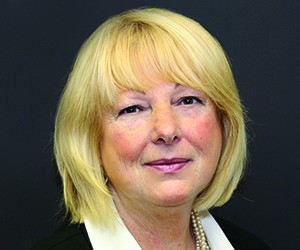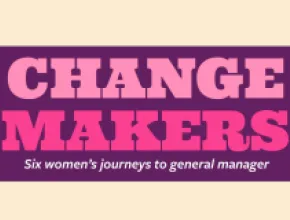Medical meeting planners are some of the most specialized and highly trained planners in the industry. It’s not just the technical complexity of medicine, pharmaceuticals, medical devices, animal health, surgery, biotechnology, patient care and all other facets of health care that makes the field so challenging, but the sheer size of the industry. By some counts, health care is the single largest component of gross domestic product in the U.S. and still growing.
The size, economic impact, and human impact of all-things medical has also made it one of the most highly regulated industries in the world. According to MPI, there are 196 countries on the globe and 87 of them currently have some type of health care meeting compliance reporting.
In most jurisdictions, including the U.S., meeting sponsors and planners have primary responsibility for collecting and reporting data on compliance and spending. It’s tough to keep on top of the current regulatory requirements, but continuing growth in health care makes medical meetings one of the hottest segments in the entire planning industry. Whether you’re considering medical meeting planning or already on the career ladder, here are tips for success—and key cautions—from six industry veterans.
Pat Schaumann
CMP, CSEP, DMCP, HMCC, Director, Professional Development, Healthcare Sector, MPI Academy. Author of Breaking the Code to Healthcare Compliance [1st, 2nd and 3rd editions] and the MPI CMP-HC Training Manual.
Pat Schaumann accidentally landed in medical meetings. Originally a teacher, she went back to school for an event and conference management degree, fell into the role of planning medical meetings during her first job and hasn’t looked back.
“As meeting planners, we do what we have always done: We plan logistics. That is no different in health care. What is different is that we capture more data and report to more regulatory bodies than any industry. Medical meeting professionals very much need to be aware of compliance and spend tracking. They need to understand the terminology in health care and in health care meetings. They need to understand what HCPs, health care professionals, are and what that really means in the context of meetings, data collection and reporting. And they need to realize that we are all working under spending caps.
There are educational opportunities I would stress for someone considering entering the field or already in it. One is the Healthcare Meeting Compliance Certificate program. This is a semester-long university course taught in four hours, designed for working adults. Planners should also look at industry conferences and seminars on medical meeting planning.
Also available is the new CMP subspecialty, CMP Healthcare, or CMP-HC. For the Convention Industry Council to create its first-ever subspecialty shows the importance of education. MPI is launching a training program and CMP-HC Training Manual, and I have a third edition of Breaking the Code to Healthcare Compliance. Both books are available at www.meetingcompliance.com or through the MPI Bookstore.”
Felix Niespodziewanski
Immediate past Director of Conventions and Meetings,
American College of Surgeons
Felix Niespodziewanski spent more than 40 years planning meetings for a variety of health care industry associations. After initially completing an accounting degree, he was offered two positions by the same association, accounting or meetings and conventions. Planning seemed more intriguing.
“Our clientele is different from most other industries. Name a profession in which the expectation of the individual is higher than surgeons or physicians overall. Our constituents have very high expectations of the quality of the product we deliver, and not just the educational content that is the traditional mainstay of medical meetings. Education is much more effective if you have a supportive environment, and that doesn’t mean meeting on a Caribbean cruise.
A supportive environment means simple registration, a simple housing process, an easy meet-and-greet, every room being properly set when the first person walks in, good AV. You have to remember that association attendees are invited to attend, not ordered. Our audience is always looking at whether or not they actually need to go to this meeting. People are looking much more closely today at the expense associated with a meeting, whether they will get what they need out of it, and whether they will get reimbursed by their institution, health system or group practice.
Do they have to attend to get what they want and need, whether it is CME or progress on some sort of certification or talking with colleagues? Our ultimate goal is to help them say yes.”
PageBreak
Lisa Astorga
CMP, Director of Meetings,
International Society of
Thrombosis and Haemostasis
Lisa Astorga stumbled into the medical world with her first event industry job, registration manager for an events firm that specialized in nursing associations.
“Medical planners struggle to get our arms around [regulations], particularly those of us who plan international meetings. We have CME guidelines to follow, voluntary industry guidelines, regulatory mandates. Navigating the challenges, figuring out which requirements take precedence, which mandates apply to domestic attendees and which apply to international attendees and from which countries, which requirements we are responsible for policing, and, ultimately, how will it affect our attendees’ experience? Medical is not one of those industries where you put on the same meeting year after year with different speakers saying the same things.
At the same time, clinicians and researchers love to meet in person. We have an entire academy with webinars for those who cannot attend meetings in person, but face-to-face meetings are a primary focus for medical. As a planner, you are always navigating new twists in cozvmpliance and the uncertainty in how compliance may impact your meetings. When it comes to compliance, there is no grandfathering. You may be four or five years or four or five months out on a meeting and when compliance changes, you have to go with it. It keeps us on our toes, thinking ahead and being ready to adapt and modify as necessary.”
Kimberly St. Martin
CMP, Meeting Planner,
Zimmer Biomet
Kim St. Martin is a veteran planner with medical device maker Zimmer Biomet. Like many planners, she arrived in the medical field by chance. A friend had a friend at a startup biotech firm that needed planning help and the rest is history. Martin stresses that regulatory requirements and spending caps create service challenges.
“The data collection and reporting we do is a full-time job in addition to planning a meeting. And spending caps are a growing issue. Regulatory and budget allowances have not adjusted to the reality that we are not in the same economy were working in around 2008/2009. Hotel rates have increased significantly but our spending caps haven’t kept up. Some vendors, especially restaurants, are recognizing the problem with special menus that are designed and priced to meet all of our regulatory guidelines.
And while our attendees, primarily surgeons, know we all have limits, they aren’t fully in tune with compliance. That makes it harder to provide good customer service. Say a doctor wants to stay an extra night or two at the meeting hotel. He knows he will pay the bill, but it would be helpful if we could handle the booking so he doesn’t have to take time away from the meeting. But we’re not allowed to provide that kind of service. Regulation crosses the line on customer service and makes it difficult to be helpful.”
George Odom
Vice President and Principal,
Integrated Travel and Meetings, Advito
George Odom backed into medical meeting training as a pharmaceutical sales rep for Eli Lilly. When he moved into sales training, his responsibilities included planning sales meetings, then consolidating the company’s global travel and meeting programs.
“Your attendees, your customers, are highly educated, world-renowned physicians, researchers and health care providers. You’ve got to interact with them on a very professional basis. You have to be constantly focused on service and results as you manage your people, money, resources and regulatory requirements. Medical is one industry where you don’t buy cheap, you buy the appropriate service at the lowest possible price. But above all, it has to be the appropriate service. Your goal is not to find the cheapest thing, your goal is to find the most appropriate thing at the lowest possible price.
In the pharma world, people look at how well I maximize my resources, not how little I spend. That’s where medical meeting planners need to think. Let me understand, customer, what you are trying to accomplish and let’s figure out how to do that in the best way. Not the cheapest way, the best way. That’s when we start looking for ways to maximize the value by figuring cost into the equation.”






